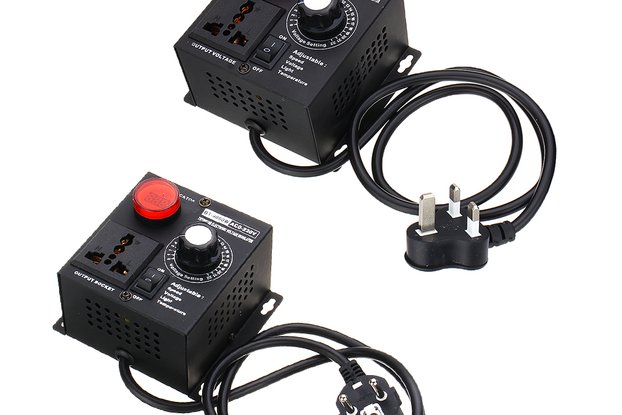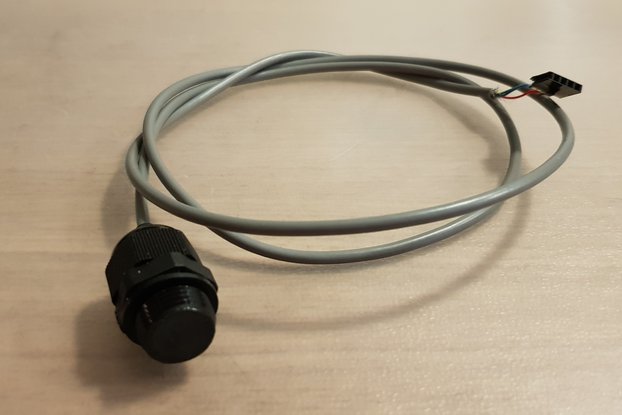Thermocouple Amplifier System w/ Cold Junction Compensator: Analog Output
Designed by Herdware in United States of AmericaNo shipping info available.
Set destination country to see options
Shipping to starts at
Free shipping is available to !
Ships from
This item does not ship to .
More Info
Sign up to get notified when this product is back in stock!
A Thermocouple Amplifier System Based on Linear Technology's LT1025 - Micropower Thermocouple Cold Junction Compensator combined with the LTC1049 - Low Power Zero-Drift Operational Amplifier with Int…
Read More…A Thermocouple Amplifier System Based on Linear Technology's LT1025 - Micropower Thermocouple Cold Junction Compensator combined with the LTC1049 - Low Power Zero-Drift Operational Amplifier with Internal Capacitors this small circuit provides a basic thermocouple amplifier.
The combination of chips produces a DC voltage signal roughly equal to 10mv per degree C and a fairly linear response due to the "bow" correction built in to the LT1025.
Four different outputs to support six different thermocouple types (E,J,K,R,S,T) and a 10mv per degree C° DC voltage output for custom temperature compensation techniques.
Includes standoffs. Mounting holes on 1.5" centers, common Herdware EEBloxx footprint.
Power: - 4V to 15V Operation - 8" Power Cable included
Datasheets:
The LT® 1025 is a micropower thermocouple cold junction compensator for use with type E, J, K, R, S, and T thermocouples and forms a thermocouple amplifier system. It utilizes wafer level and post-package trimming to achieve 0.5°C initial accuracy. Special curvature correction circuitry is used to match the “bow” found in all thermocouples so that accurate cold junction compensation is maintained over a wider temperature range.
The LT1025 will operate with a supply voltage from 4V to 36V. Typical supply current is 80µA, resulting in less than 0.1°C internal temperature rise for supply voltages under 10V. A 10mV/°C output is available at low impedance, in addition to the direct thermocouple voltages of 60.9µV/°C (E), 51.7µV/°C (J), 40.3µV/°C (K, T) and 5.95µV/°C (R, S). All outputs are essentially independent of power supply voltage.
A special kit is available (LTK001) which contains an LT1025 and a custom tailored thermocouple amplifier. The amplifier and compensator are matched to allow a much tighter specification of temperature error than would be obtained by adding the compensator and amplifier errors on a worst-case basis. The thermocouple amplifier from this kit is available separately as LTKA0x.
A thermocouple consists of two dissimilar metals joined together. A voltage (Seebeck EMF) will be generated if the two ends of the thermocouple are at different temperatures. In Figure 1, iron and constantan are joined at the temperature measuring point T1. Two additional thermocouple junctions are formed where the iron and constantan connect to ordinary copper wire. For the purposes of this discussion it is assumed that these two junctions are at the same temperature, T2.
The Seebeck voltage, VS, is the product of the Seebeck coefficient α, and the temperature difference, T1 – T2; VS = α (T1 – T2). The junctions at T2 are commonly called the cold junction because a common practice is to immerse the T2 junction in 0°C ice/water slurry to make T2 independent of room temperature variations. Thermocouple tables are based on a cold-junction temperature of 0°C. To date, IC manufacturers efforts to make microminiature thermos bottles have not been totally successful. Therefore, an electronically simulated cold-junction is required for most applications.
The idea is basically to add a temperature dependent voltage to VS such that the voltage sum is the same as if the T2 junction were at a constant 0°C instead of at room temperature. This voltage source is called a cold junction compensator. Its output is designed to be 0V at 0°C and have a slope equal to the Seebeck coefficient over the expected range of T2 temperatures.
To operate properly, a cold junction compensator must be at exactly the same temperature as the cold junction of the thermocouple (T2). Therefore, it is important to locate the LT1025 physically close to the cold junction with local temperature gradients minimized. Theory of Operation
A thermocouple consists of two dissimilar metals joined together. A voltage (Seebeck EMF) will be generated if the two ends of the thermocouple are at different temperatures. In Figure 1, iron and constantan are joined at the temperature measuring point T1. Two additional thermocouple junctions are formed where the iron and constantan connect to ordinary copper wire. For the purposes of this discussion it is assumed that these two junctions are at the same temperature, T2.
The Seebeck voltage, VS, is the product of the Seebeck coefficient α, and the temperature difference, T1 – T2; VS = α (T1 – T2). The junctions at T2 are commonly called the cold junction because a common practice is to immerse the T2 junction in 0°C ice/water slurry to make T2 independent of room temperature variations. Thermocouple tables are based on a cold-junction temperature of 0°C. To date, IC manufacturers efforts to make microminiature thermos bottles have not been totally successful. Therefore, an electronically simulated cold-junction is required for most applications.
The idea is basically to add a temperature dependent voltage to VS such that the voltage sum is the same as if the T2 junction were at a constant 0°C instead of at room temperature. This voltage source is called a cold junction compensator. Its output is designed to be 0V at 0°C and have a slope equal to the Seebeck coefficient over the expected range of T2 temperatures.
To operate properly, a cold junction compensator must be at exactly the same temperature as the cold junction of the thermocouple (T2). Therefore, it is important to locate the LT1025 physically close to the cold junction with local temperature gradients minimized.
In many situations, thermocouples are used in high noise environments, and some sort of input filter is required. (See discussion of input filters). To reject 60Hz pick-up with reasonable capacitor values, input resistors in the 10k-100k range are needed. Under these conditions, bias current for the amplifier needs to be less than 1nA to avoid offset and drift effects.
To avoid gain error, high open loop gain is necessary for single-stage thermocouple amplifiers with 10mV/°C or higher outputs. A type K thermocouple amplifier, for instance, with 100mV/°C output, needs a closed loop gain of ≈2,500. An ordinary op amp with a minimum open loop of 50,000 would have an initial gain error of (2,500)/(50,000) = 5%! Although closed loop gain is commonly trimmed, temperature drift of open loop gain will have a very deleterious effect on output accuracy. Minimum suggested open loop gain for type E, J, K, and T thermocouples is 250,000. This gain is adequate for type R and S if output scaling is 10mV/°C or less
The industry has created standardized classifications of thermocouples that provide engineers with guidelines when selecting the best part for a design (Table 1). As you can see, standard ranges and classifications for thermocouples can operate at temperatures as high as 1,750°C and as low as –250°C. Standard semiconductors and solder materials will not operate or even survive in these extremes.
No country selected, please select your country to see shipping options.
No rates are available for shipping to .
Enter your email address if you'd like to be notified when Thermocouple Amplifier & Cold Junction Compensator can be shipped to you:
Thanks! We'll let you know when the seller adds shipping rates for your country.
| Shipping Rate | Tracked | Ships From | First Item | Additional Items |
|---|---|---|---|---|
|
:
|
No shipping info available.
Set destination country to see options
Shipping to starts at
Free shipping is available to !
Ships from
This item does not ship to .
More Info
Sign up to get notified when this product is back in stock!

$40.00
Free Shipping!

$37.00
Free Shipping!

$129.00
Free Shipping!

$69.00
Free Shipping!
By clicking Register, you confirm that you accept our Terms & Conditions
We recognize our top users by making them a Tindarian. Tindarians have access to secret & unreleased features.
We look for the most active & best members of the Tindie community, and invite them to join. There isn't a selection process or form to fill out. The only way to become a Tindarian is by being a nice & active member of the Tindie community!
